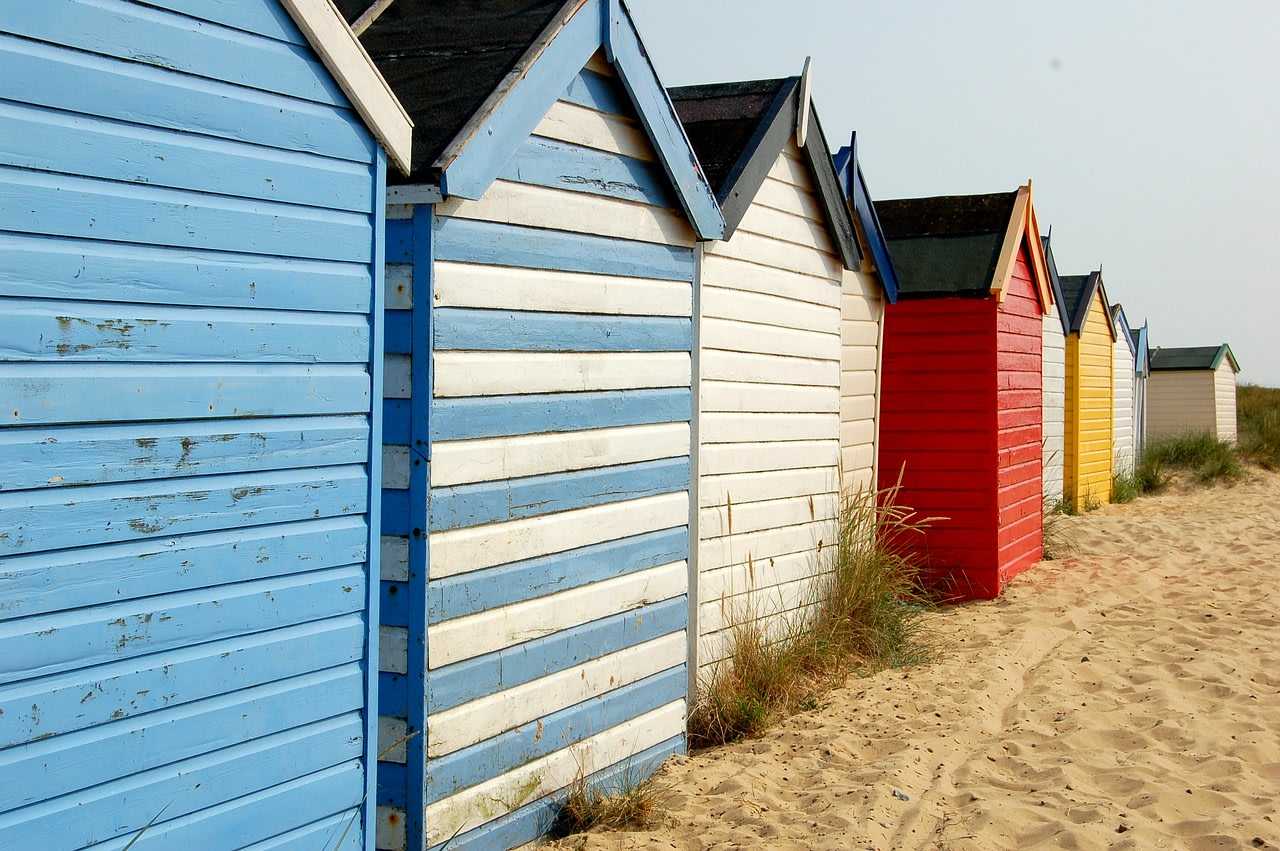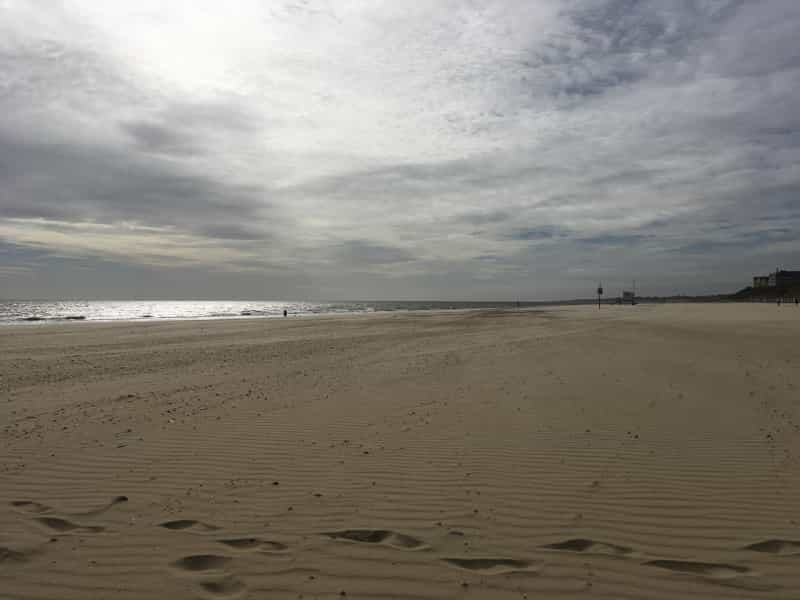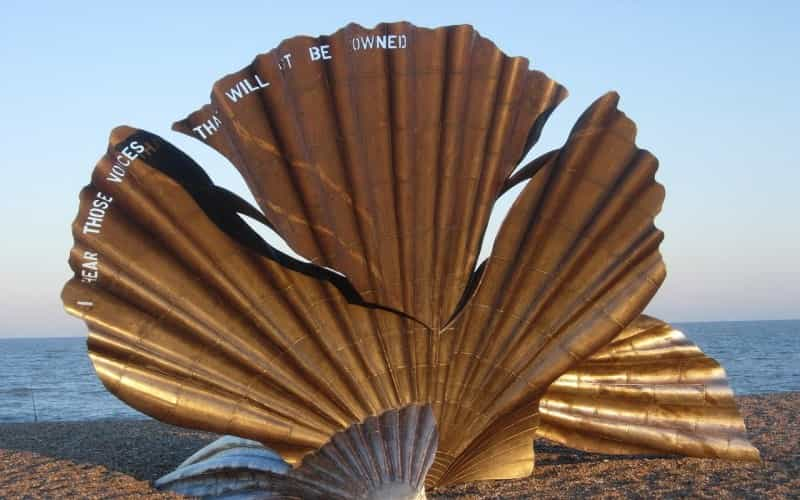Top 8 Beaches In Suffolk
There’s a reason that the Suffolk coast is well known – once people visit, they tend to return again and again.
Locations like Aldeburgh, Dunwich Heath and Southwold are all part of the Suffolk Coast and Heath Area of Outstanding Natural Beauty, which sweeps up along much of the county’s shore. Nature reserves, rare wildlife and little pockets of wildness are all part of the landscape here.
During summer months, resort towns like Lowestoft fill up with happy holidaymakers, who plunge headfirst into adrenaline-pumping watersports or stroll gently along traditional seaside promenades. If arts and culture are more your style, head to Aldeburgh. As well as a scenic stony beach, this town has festivals for everything from contemporary music to local crafts, plus a carnival procession held every August.
Whatever your interests, there’s far too much in Suffolk to see in one trip. Time to start planning your next visit, perhaps...
Read on for our guide to Suffolk’s best beaches.

Family-friendly faves:
Southwold Beach
If you’re looking for a classic British seaside holiday, visit Southwold. The sandy beach here is backed by a promenade and lined with colourful beach huts that look out to sea. It’s Blue Flag certified, so swimmers are assured good water quality.
250m-long Southwold Pier has an amusement arcade, a restaurant, and the Water Clock (Southwold’s answer to both a cuckoo clock and the Manneken Pis). Other landmarks include the Grade II-listed lighthouse, which still guides ships into Southwold harbour, and Adnams Brewery. For adults, brewery tours are available – or you can sample the brewery’s output at pretty much any pub in town.
Felixstowe
East Anglia’s only seaside resort to face southwards, Felixstowe has a four-mile stretch of beach that slopes down into a sheltered bay popular with swimmers. Like Southwold, it has a promenade and a pier with seaside amusements, plus plenty of ice cream kiosks and shops.
If you’ve got your bucket and spade ready to go, head to the Blue Flag-certified South beach (the section of beach south of the pier). This is sandier than the shingle stretch of North beach (no prizes for guessing the location of this), ensuring far better sandcastles.
Hit the hippest part of town with a trip to Beach Street, an area made from upcycled shipping containers. It’s home to independent boutiques and street food eateries, and just right for a sunset picnic. There are also lots of coastal paths for a stroll nearby: if that sounds like heaven, read our guide to the best walks in Suffolk.
See campsites near Felixstowe.

Lowestoft
Located on Suffolk’s ‘Sunrise Coast’, Lowestoft beach is known for its golden sand (and yep, it’s Blue Flag certified). It’s popular with swimmers and a whole host of watersports enthusiasts, from surfers to jetskiers.
Lowestoft has a traditional seafront with a promenade and – one-upping the other seaside resort towns – two piers. South Pier has penny arcades, entertainment like ten-pin bowling, a gift shop and eateries. Claremont Pier used to be the docking point for steamships, but today it has food and drink options including fish and chips, plus an amusement arcade and a bar.
Hidden gems:
Covehithe Beach
If you’re looking for something wild, this one’s for you: Covehithe’s coastline has been pushed back more than 500 metres since 1830, as the beach is engaged in a long battle with the North Sea and coastal erosion. Its golden sands are backed by dramatic crumbling cliffs and scattered with wave-smoothed tree trunks washed ashore. To the south of the beach, there’s a lagoon to paddle in.
Park near the church-within-a-church (worth a look in its own right: the current church, built in the 17th century, sits cosily in the giant exoskeleton of the 14th-century church) and follow the footpath through fields and sand dunes to the beach.
Covehithe is a favourite with dog walkers. If that’s you too, read our guide to the best dog walks in Suffolk for more.

Orford Ness Beach
Sorry pups, dogs aren’t allowed at Orford Ness beach or the National Nature Reserve that it sits in (except for assistance dogs). It’s an internationally important coastal habitat that’s home to a unique array of flora and fauna, including rare species and migratory birds.
It’s also home to some fascinating military history. Orford Ness was once a testing site for weapons including atomic bombs, which has left the beach with atmospheric buildings like the Black Beacon, Bomb Ballistics Building (climb up to the roof for stunning views out to sea) and the Radar Receiver Building (which now houses an exhibition called Island of Secrets).
See campsites near Orford Ness.
Kessingland Beach
Writer H. Rider Haggard (known for adventure stories like King Solomon’s Mines) had a holiday home at Kessingland in the early 1900s, and planted the marram grass that still protects the beach from erosion today. In summer, wild lupins bloom along the low cliffs.
At the southern end of the beach, Benacre Nature Reserve is home to a wide variety of migratory and non-migratory birds (dogs need to be kept on a lead here). While windsurfing and other watersports are popular here, the beach is so big that it rarely feels crowded.
See campsites near Kessingland Beach.
Not just a pretty beach:
Aldeburgh Beach
Aldeburgh is probably Suffolk’s best-known beach. The town was once a Tudor port, where ships like Francis Drake’s Golden Hind were built. Today, the beachfront is still lined with historic buildings like a Norman church, the UK’s biggest Martello tower (small circular forts built to defend England during the Napoleonic Wars), and a 400-year-old Moot Hall. Get takeaway fish and chips to eat on the sand-and-shingle shore – locals say they’re the best on the east coast (or possibly the whole United Kingdom).
But the real draw of Aldeburgh is its cultural heritage. It has strong connections with composer Benjamin Britten, who founded the Aldeburgh Festival (held every June). Britten is commemorated in visual form by Maggi Hambling’s sculpture Scallop, sitting directly on the pebble beach. Aldeburgh has several art galleries to explore, and other festivals it hosts include the Aldeburgh Literary Festival (March) and the Aldeburgh Poetry Festival (November).
See campsites near Aldeburgh Beach.

Dunwich Beach
Backed by sand dunes, heather and gorse, Dunwich beach is popular with swimmers and dog-walkers. However, the biggest draw here is the nature that surrounds it.
The beach lies on the edge of National Trust-owned Dunwich Heath, a haven for wildlife like nightjars and the Dartford warbler. Visiting with kids? Explore nature trails and walks designed just for them, or head to the den-building area to make your very own wild shelter.
See campsites near Dunwich Beach, or explore all our campsites in Suffolk.
Looking for post-beach-day ideas? Check out our guide to the best things to do in Suffolk.